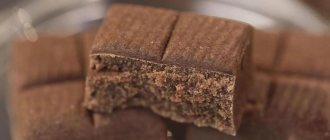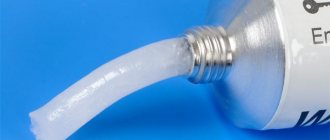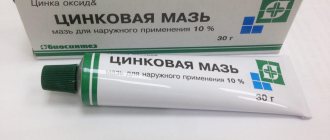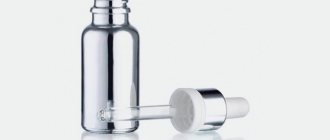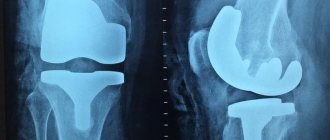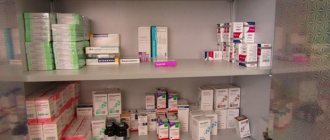Vaseline is a universal remedy that has a wide range of uses in different areas.
Widely popular in cosmetology and medicine. Finds its application in everyday life. It is in every home, because it is a very affordable and effective remedy that can solve many problems. What is Vaseline made from? Where and how to use it? Does it have contraindications and side effects? You will find out the answer to these and other questions from our article.
The product is a dense translucent mass without a pronounced odor. If you taste this ointment, you will not feel any special taste. She's tasteless.
What is Vaseline?
Chemists obtain petroleum jelly from oil. After its accidental discovery during oil drilling, it has been around for over 100 years.
Refined Vaseline
is a mineral oil that many companies market as a general-purpose skin care product.
The purity of Vaseline depends on the manufacturing process. Unrefined petroleum jelly may contain harmful ingredients, but refined petroleum jelly is usually safe. It is important to read the ingredient label and contact the manufacturer with any questions about the cleaning process.
Vaseline: composition and release form
Compound
These are petroleum (mineral) oils and solid paraffin substances.
Mineral oils are obtained during the refining of petroleum products. Paraffin substances are a waxy mixture of hydrocarbons with a branched or linear structure.
Release form
This ointment is suitable for external use only. Available in the form of an ointment in tubes and jars of 25, 50, 75 or 100 grams.
The color of the ointment can vary from translucent white to light yellow. Melts at temperatures above 27 degrees. When melted, it turns into a cloudy, odorless, oily liquid.
There are types:
- Medical.
- Cosmetic.
- Technological.
Benefits of Vaseline
Companies once marketed Vaseline as a miracle cure for everything from wrinkles to burns. While it cannot cure all skin conditions, it is a versatile and affordable skin care option.
Benefits of Vaseline include:
Acting as a skin barrier
The skin does not easily absorb Vaseline. This means that it is not actually a humectant, but a barrier that can keep dirt out and prevent moisture loss. People can try applying it to irritated skin before spending time outside in cold, dry, windy air. People with a cold can apply it to the skin near the nose to prevent irritation due to a runny nose or frequent wiping of the nose.
Preventing irritation
Chafing, which occurs when another part of the body or clothing rubs against the skin, causing irritation. This is especially true for people with eczema or dry skin. Some people develop a rash or broken skin due to irritation. Applying petroleum jelly to areas prone to chafing can help prevent this.
Treatment of diaper rash
Many babies develop skin rashes after sitting on wet diapers. Vaseline creates a moisture barrier that can reduce the risk of diaper rash. It may also soothe the skin and provide relief from existing wet diaper rash.
Preventing Peeling
Exfoliation of the skin may cause irritation. Vaseline can soothe irritation and help the skin heal. People can try applying it to dry, chapped lips or irritated eyelids in cold weather.
Treatment of eczema
Eczema is a chronic skin condition that causes irritation, itching and flaking. A 2021 study found that petroleum jelly may prevent eczema flare-ups. Scientists have concluded that frequently moisturizing the skin of newborns at high risk of eczema may prevent flare-ups. Vaseline, according to the study, was found to be particularly effective and more affordable than other options.
History of invention
Initially, Robert Chesbrough called the new product petroleum jelly. But this name did not attract buyers, so the inventor decided to use a combination of two words: the German “wasser” - water and the Greek “elaion” - olive oil.
Article on the topic Castor oil, ma'am! 6 Unusual Uses for an Old Product In 1872, Chesbrough received a patent for the production of the product, and on May 14, 1878, he patented “Vaseline” as a trademark.
The history of “Vaseline” is unique, because this is a rare case when a trademark name comes into general use as a common name of a product category.
Vaseline benefit or harm for skin - considerations
Purified forms of Vaseline do not contain dangerous ingredients. Vaseline is one of the most popular commercial forms, and according to the Environmental Working Group (EWG), it helps counteract carcinogens and other dangerous ingredients. Unrefined petroleum jelly contains some potentially dangerous contaminants. A group of carcinogens called polycyclic aromatic hydrocarbons can cause cancer and damage reproductive organs. People who want to use Vaseline must buy it from a pharmacy. Homemade products containing petroleum jelly and products from unknown brands may contain harmful ingredients. Vaseline can also worsen skin conditions. The skin naturally forms a protective film after injury, which helps prevent further damage and infection. Vaseline interferes with the formation of this film. Although Vaseline can be used as a lubricant if there are no better options for this. Vaseline is also difficult to clean or rinse off after compared to water-based lubricants. This increases the chance of developing a bacterial infection. Vaseline can also clog pores. People with acne or sensitive skin should avoid using petroleum jelly on areas such as the face. Store it in a cool, dry place. Vaseline can also irritate the lungs, especially in large quantities. Very rarely, this irritation can cause pneumonia.
Contraindications and side effects
As with everything, when using this ointment, it is important to know when to stop and not to apply it in a generous layer, since such use can give a negative result instead of a protective and softening effect. If you lubricate the skin with copious amounts of Vaseline, glands may become clogged.
Occasionally, an allergic reaction to this ointment may occur in the form of pain and rashes.
Vaseline can be combined with other medications and used during pregnancy and lactation.
conclusions
Vaseline is an affordable, multi-use skin care product.
Vaseline is not a substitute for other skin care products, including a quality moisturizer. Its application may even worsen the condition of the skin, slowing down the healing time. People concerned about skin problems or interested in assessing the benefits and risks of Vaseline should consult a dermatologist. Vaseline is available in grocery stores, pharmacies, and online retailers.
The authors of another article suggest how to care for dry skin in winter.
Kinds
Depending on the origin, there are 2 types of Vaseline:
- Natural (natural) - obtained from hardwood paraffin resins, purified and bleached. It is distinguished by its light-transmitting color, greater ductility, and the absence of effusions (the release of moisture droplets on the surface).
- Fake - an alloy of ceresins and paraffins with pure vaseline or perfume oil. It has a cloudy yellow or white color and a more viscous consistency.
According to the scope of use and parameters, Vaseline is:
- Technical.
- Medical.
- Cosmetic.
- Food.
- Boric.
- Salicylic.
- Children's.
- Liquid (vaseline oil).
special instructions
According to Wikipedia, Vaseline is a petroleum product that is a purified mixture of heavy carbohydrates and mineral oil with the general formula CnH2n+2.
The carbohydrate mixture consists primarily of branched and straight chains and may contain cyclic alkanes and aromatic molecules with paraffin side chains.
According to the European Pharmacopoeia 2005 and USP 28, the substance may contain a certain stabilizer (antioxidant, for example, butyl hydroxytoluene, alpha-tocopherol or butyl hydroxyanisole), which is noted in the product labeling.
What is Vaseline made from? The substance is obtained by steam or vacuum distillation of semi-liquid residues from oil refining. The resulting substance is purified by high-pressure hydrogenation or by treatment with sulfate acid after filtration through adsorbents.
Along with drugs produced by pharmaceutical and cosmetic companies, technical Vaseline, which is obtained from the wood processing industry, also enters the market.
The substance is used to impregnate fabric and paper, protect metal from corrosion, and also in the production of plastic lubricants that are resistant to strong oxidizing agents.
Enthusiastic chemists use the substance to produce an explosive. To obtain the so-called “explosive” Vaseline, combine 2 parts of ointment with 1 part of gasoline. The mixture explodes under the influence of electric current.
Precautionary measures
When using salicylic or boric ointment, it is necessary to avoid contact of the product with the mucous membrane of the eyes. If this does happen, the eyes should be wiped with gauze or a cotton swab and rinsed well with warm water.
Boric Vaseline should not be applied to hairy areas of the body affected by an acute inflammatory process.
Analogs
Level 4 ATX code matches:
Badyaga Forte
Badyaga
Rogaine
Capsiol
Vulnuzan
Skin cap
Generolon
Alerana
Apilak
Solcoseryl
Tsinocap
Silocast
What can replace Vaseline? The following products have a similar effect with the drug: Apropol , Biobalm Mink , Glycerin , Dexeryl , Kalankhin , Tumanidze Ointment , Methyluracil , Pyolysin , Propolis milk , Reparaf , plant raw materials from chamomile flowers, Lead water , Skin-cap , Solcoseryl , Chloroform liniment , U roderm .
Usage
In medicine
The use of medical Vaseline involves its use as follows:
- In the form of a laxative, a similar result is achieved with internal use of the drug.
- As a lubricant for lubricating the tips of rubber bulbs (enemas) and gas outlet tubes in hospitals.
- In the form of a dermatoprotective ointment, Vaseline forms a film on the skin surface that protects it from chapping and the harmful effects of ultraviolet radiation, and also helps to quickly heal scratches and cracks.
- As a disinfectant, the substance is applied to open wounds.
- To soften the skin before applying heating cups to prevent burns.
Interaction
Being an indifferent substance, Vaseline does not interact with other drugs.
The drug is often used as an ointment base for the skin. Being a fat-like substance of mineral origin, Vaseline is characterized by high chemical resistance and does not change its properties even during long-term storage.
The product can be mixed with almost all active chemicals. It has good sliding properties and effectively protects painful areas of the skin from harmful liquids and gases, as well as from air access.
Since the ointment is not absorbed through the skin, the medicinal substances contained in it are also not absorbed into the skin or their effect is extremely insignificant.
Reviews
Vaseline is a product proven over the years that effectively softens chapped and dry skin, and also accelerates the healing of microtraumas.
There are a lot of reviews about it on the Internet. Almost all of them are based on the experience of using the drug as a cosmetic product. According to most women, Vaseline is one of the most affordable and effective means for maintaining skin, nails and hair in good condition.
Spot application of ointment can reduce the severity of post-acne and prevent the formation of scars on the face due to acne . Applied to hair, the product “glues” split ends and makes hair healthier and shinier.
Used as a lip balm, the ointment makes lips soft and silky literally after the first use. The product also quickly and effectively improves the condition of the skin on the knees and elbows, heals cracks in the feet, softens the cuticle, and in the cold season protects the face from wind and frost.
Instructions for use of Vaseline (Method and dosage)
Vaseline is an external remedy. A small amount of the product is applied to previously cleansed dry skin and lightly rubbed. The drug can also be used for applications.
Vaseline is not suitable for intimate use if partners use latex contraceptives.
Instructions for Salicylic Vaseline
Salicylic Vaseline should be applied to the affected area of skin in a very thin layer. After treating the lesion with ointment, cover it with a sterile napkin and apply a sterile bandage pre-impregnated with salicylic ointment .
Experts advise changing the bandage every 2-3 days. Treatment is continued until the purulent contents completely drain from the lesion. As a rule, the course lasts from 6 to 20 days.
For ichthyosis, one percent salicylic petroleum jelly is used in combination with lanolin . It is recommended to rub the mixture into the skin after a hot bath.
Why is Boric Vaseline needed?
Boric petroleum jelly is used to treat lice. The product is applied to the scalp for 20-30 minutes and then washed off with warm running water and shampoo or soap.
To remove dead insects, the hair should be combed with a fine-toothed comb.
The amount of treatment depends on the thickness, length and degree of infection of the hair. Typically, 10 to 25 grams of ointment is sufficient for one procedure.
Why is Vaseline used in cosmetology?
Everyone knows what Vaseline is. But not everyone knows that this product is a wonderful cosmetic product that allows you to effectively and comprehensively care for hair, nails and skin.
Vaseline is used to soften rough heels and accelerate the healing of cracks that have formed on them. To keep your feet soft and smooth, it is recommended to lubricate them with Vaseline every night before going to bed. For greater effectiveness, the legs are wrapped in cling film and warm socks are put on top.
For deep cracks, the feet should be steamed in a hot bath with a decoction of medicinal herbs or boric acid (the product is taken at the rate of a teaspoon per glass of water) and then apply a thick layer of Vaseline to the cracked heels, secure the patch on top and leave for 8 hours (it is best to do this before bedtime). The procedure is repeated every day until the cracks completely disappear.
Using Vaseline on eyelashes can make them thicker and longer. To achieve the desired effect, it is recommended to regularly lubricate them with a small amount of product (preferably at night).
The product provides excellent conditioning and hydration of dry and brittle eyelashes, and also helps strengthen them. However, it does not cause irritation and is considered safe for use on the mucous membrane of the eyes.
Reviews from women who have used Vaseline for eyelashes indicate that the results are not long in coming - after just a couple of weeks the eyelashes become thicker, grow faster and fall out significantly less.
The use of cosmetic Vaseline for eyebrows allows you to give them a correct and stable shape. To do this, a drop of the product is carefully distributed over the hairs with a cosmetic brush, after which the eyebrow is carefully combed, giving it the desired shape.
Once the ointment dries, it will not only fix the hairs, but also give them shine.
In the same way, it can be used for hair: the ointment will not weigh it down, but will make it smoother and more manageable, and will also disguise split ends. The drug reduces the formation of dandruff and reduces the itching of the scalp .
For the face, Vaseline is used as a makeup remover. To carry out makeup removal, soak a cotton pad with ointment and use light movements to remove any remaining makeup along massage lines. Vaseline gently and thoroughly removes even waterproof makeup.
In addition, the product perfectly protects the skin from environmental influences, which makes it indispensable in cold windy weather.
The ointment quickly heals chapped skin of chapped lips. In addition, you can use it to make an inexpensive and safe lip balm. To do this, melt a few pieces of chocolate and a small amount of Vaseline in the microwave. After this, the liquid mass is thoroughly mixed and cooled until the solid consistency is completely stabilized.
Vaseline with sea salt, ground coffee or brown sugar makes a great body scrub.
For acne, the use of the product allows you to eliminate the scars that remain on the skin at the site of acne. To do this, the affected areas begin to be treated with ointment from the moment the scars appear, preventing them from becoming coarser.
The property of Vaseline to promote healing and restoration of the skin, as well as prevent the formation of rough crusts, makes it advisable to use it after plastic surgery and for the treatment of fresh tattoos.
Lubricating the cuticle with Vaseline makes the thin skin around the nail plate softer and your fingers more well-groomed. If you rub a small amount of ointment into your nails, they will become more shiny.
The drug has found use as a replacement for aftershave balm, massage product and base for self-tanning or bronzing cream (if you lubricate dry areas of the skin with Vaseline, the cream goes on more smoothly and as a result the tan turns out more beautiful).
Contrary to popular belief, the drug is used very little as an intimate lubricant. The ointment destroys the structure of latex, which is why it is absolutely not suitable for people who use latex contraceptives for sex.
Why do you need Vaseline in everyday life?
The use of Vaseline allows you to restore the shine to dry bags and shoes and remove stains from cosmetics from clothes.
You can use the ointment to lubricate fishing rods, and if you apply a small amount of it to the neck of a bottle of nail polish, the cap with the brush will not dry to it.
Mothers use the product to lubricate their child's eyebrows when washing their hair. This simple method will allow you to create a kind of “visor” to protect your eyes from shampoo foam getting into them.
Side effects
Vaseline is well tolerated by patients and rarely causes side effects. In isolated cases, the development of allergic reactions (hypersensitivity reactions) was noted and irritation appeared at the site of application of the ointment.
Salicylic ointment also, as a rule, does not cause unwanted reactions, but in high concentrations it can irritate the skin. Persons with individual intolerance may develop allergic dermatitis .
Sometimes patients who had the product applied to large areas of the skin (or used as a compress) experienced a feeling of heat, difficulty breathing, and headache.
Ointment containing salicylic acid in large quantities can cause skin soreness. In this case, the medicine is removed and the irritated skin is treated with zinc paste .

